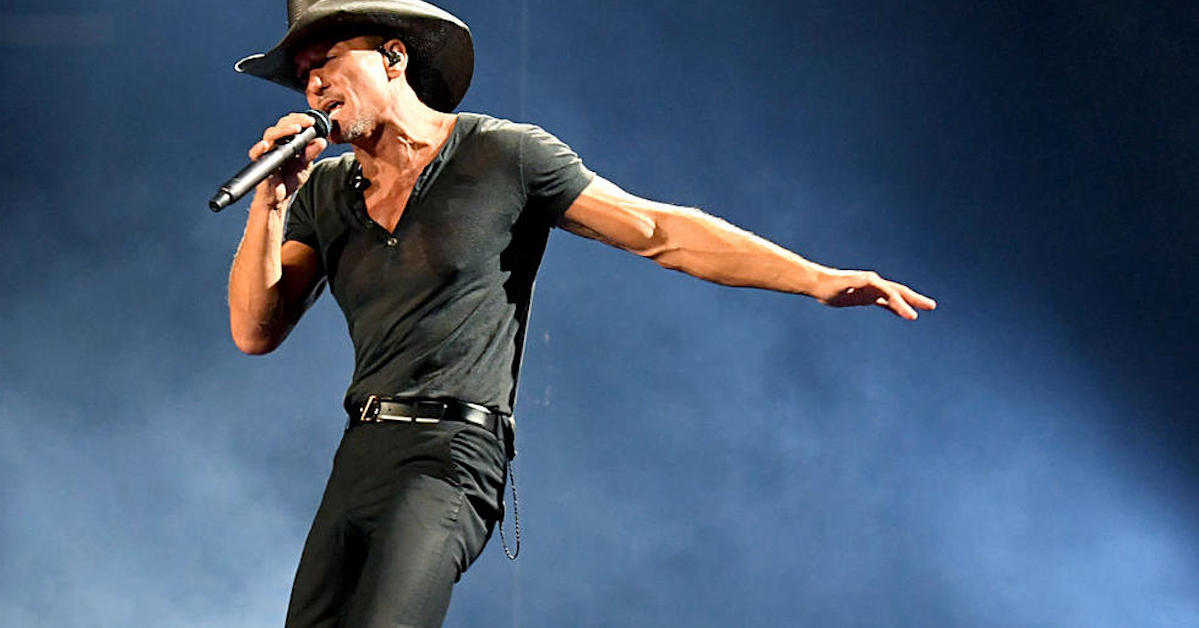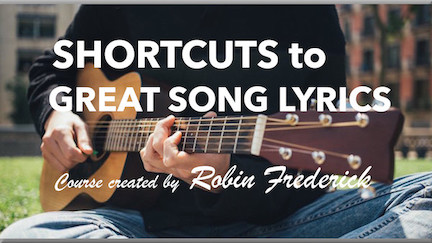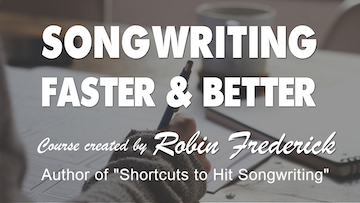“Highway Don’t Care” is a great example of Contemporary Country songwriting. The lyric paints a vibrant, detailed picture of the characters and situation, offering an original approach to a familiar theme. And even though we all know “lyrics are king” in Country music, the melody played an equally important role in sending this song to the No. 1 spot on the music charts.
“Highway Don’t Care” – Tim McGraw
Songwriters: Mark Irwin, Joshua Kear, Brad Warren, Brett Warren
TECHNIQUES TO HEAR AND TRY:
- Engage your listener with your opening line.
- Use images to express emotion.
- Make your melody memorable with repetition and variation.
- Learn to use your demo production “ears.”
Listen to the song. Read the lyrics.
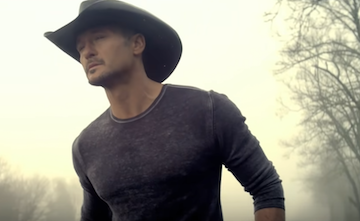
GENRE/STYLE: Contemporary Country
(What is a genre? Watch this video.)
“Highway Don’t Care” is solidly in the Contemporary Country genre. Keep in mind that today’s Country songs reach a huge audience, many of whom listen to both Country and Pop. While the production and vocal performances clearly stamp this with the current Country sound, the song itself has a number of lyric, melody, and chord elements in common with today’s Pop hits.
SONG STRUCTURE
This song has a structure that’s similar to many Pop hits.
VERSE / PRE-CHORUS / CHORUS
VERSE / PRE-CHORUS / CHORUS
INSTRUMENTAL BRIDGE
PRE-CHORUS / CHORUS (with pre-chorus)
VERSES: Verse 1 opens the song with a line that draws listeners right in: “Bet your window’s pulled down and your hair’s pulled back.” Verse 2 starts with a similar line: “I bet you got a dead cell phone in your shotgun seat.” Both verses paint a picture of what the singer imagines is going on. He doesn’t know… but he’s pretty sure. “I bet…” It tells you a lot about this relationship.
PRE-CHORUS: The pre-chorus consists of one repeated line: “I can’t live without you.” The pre-chorus in this song has a novel twist. Suddenly the vocal switches to a female and the lyric tells listeners she’s the singer on the radio. In Pre-chorus 1, the lead-in line is “And the song goes…” In Pre-chorus 2: “So you sing along…”
But what happens if the listener doesn’t hear that lead-in line? I’d be careful about doing something like this in a song of your own. If listeners didn’t catch the line that sets up the pre-chorus they could become confused – Who is singing? Why is she saying that? – and you never want that to happen. In this case, Taylor Swift has a very recognizable voice and there was plenty of publicity surrounding the recording. If you do it, you may not have those advantages.
CHORUS: Each chorus begins with “The highway won’t hold you tonight.” After the instrumental break, the line is shortened to “The highway don’t care” and, with the pre-chorus, becomes a duet.
TRANSITIONS: The transitions between sections are fairly standard. The pre-chorus ends on the V chord (an A chord) and resolves to the I chord (a D chord) to start the chorus. The melody in the turnaround is not so standard, however. Instead of reaching for the expected big held-out note before hitting the chorus, the vocal melody simply repeats the same “baby, oh baby.”
The end of the chorus resolves to the I (one) chord and holds it for one bar before launching into Verse 2 on the same chord. There’s no four-bar instrumental break here like there would have been in hits of the past. Although the transition isn’t as abrupt as most Pop songs, it still keeps the song’s momentum going and keeps the singer front and center.
– Try It Now –
Listen to the song and notice where each song section begins. See if you can identify the verses, pre-choruses, and chorus.
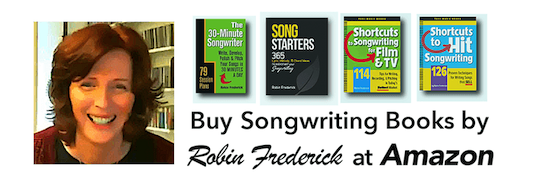
LYRICS
It’s always important to keep in mind that when a song starts, listeners are completely in the dark. They don’t know what has happened or what will happen. They don’t know who the singer is or who he’s singing about. Remember this when you write your opening lines (and you entire lyric, for that matter).
GET YOUR LISTENER INVOLVED: An interesting, informative opening pair of lines can be a big plus. There are a lot of distractions vying for the listener’s attention. You want to make your song the most appealing thing around, and the quicker the better. Take a look at how this song does it:
Bet your window’s rolled down and your hair’s pulled back
And I bet you got no idea you’re going way too fast
This image of a girl in a car raises a lot of questions for the listener: Why is she driving too fast? Is she reckless? In trouble? Why is the singer imagining what she’s doing, obviously she’s not there with him. Why not?
All of this goes through the listener’s mind rapidly and below their awareness but it’s enough to pique their interest. Try starting with lines that drop the listener right into the middle of an intriguing situation like this one.
– Try It Now –
Here are three exercises for writing a strong lyric opening.
1. If your song starts with an old standby like “I met you at the club last week” you might be giving the listener too much backstory. Drop the listener right into the middle of the action. Keep the song focused on the present moment. What are you doing now? What are you feeling right now. Take a look at your second verse to see if it would create a more immediate, interesting opening. Try starting your song with it.
2. Pick a situation or theme and write a few opening lines that would be interesting for listeners. If you need an idea for a situation, watch a TV show or movie that includes an emotional relationship, choose a scene somewhere in the middle, and start with that.
3. Practice writing interesting opening lines. Try a line of dialogue, an intriguing image or action, a question, or an unusual statement to catch the listener’s interest.
More about lyrics
USE IMAGES TO EVOKE EMOTION: Imagery is one of the most powerful tools you have as a songwriter. Why? Because when you use a word that conjures up a picture in the listener’s mind, they’re involved whether they want to be or not.
For example, if I use the word “sunrise” in a lyric, the listener pictures a sunrise. Not only that, along come all the emotional associations the listener has with the word “sunrise”—a brand new day, a sky awash in pink and blue, mist in the air. And the word “sunrise” has emotional associations that come with it, too: new beginnings, a fresh start, hope, optimism, the unknown, excitement, uncertainty.
All of this happens in an instant, before the listener is even aware of it. So, a single word that conjures up an image with associations can accomplish a lot for you, allowing you to say more with fewer words and get inside your listeners head.
Now take a look at how “Highway Don’t Care” uses an image like a highway. We can all picture a stretch of highway. It could be a long, deserted ribbon of blacktop in the middle of nowhere or a busy freeway. But whichever it is, the emotions that go with it are not warm and fuzzy. Highways are for traveling long distance. They’re not a place to rest or take it easy. The people in the cars around you are strangers, not interested in you, only in their own destinations. So, the emotional association we have with a highway is often isolation.
It makes this image a perfect choice for a payoff line like: “The highway don’t care if you’re coming home. But I do, I do.” The singer compares the strength, the warmth, and comfort of the love he’s offering to the cold, impersonal highway. Listeners can feel that; they don’t have to think about it.
Now compare that to a line that simply tells listeners what the singer is feeling: “I really love you a lot.” Hmmm. Which line would work better? No contest.
MELODY
USE REPETITION AND VARIATION: Repetition makes a melody easy to remember, variation keeps it interesting. The trick is to create patterns of repetition and variation that keep listeners interested. Let’s take a look at the patterns in this song.
VERSE MELODY PATTERN:
- Line 1 and Line 2 share the same melody.
- Line 3 and Line 4 are repeats of a short descending phrase
- The end of line 4 and Line 5 are short rising phrases (“the radio/ And the song goes…)
That’s a lot of repetition but there are three different phrases of different lengths, some rising, some falling. Listen to the verse and notice the different phrases.
PRE-CHORUS MELODY PATTERN: This section consists of a short repeated melody phrase with “oh baby” at the end. Then the whole line is repeated again. A pre-chorus can generally handle a lot of repetition because it creates tension or anticipation going into the chorus. So, not a problem.
CHORUS MELODY PATTERN: The chorus consists of a six-line repeat of the melody broken by a short phrase every three lines. This is truly an unusual amount of repetition. The songwriters keep it interesting by changing the lyric and the chord underneath each of the three lines, making each one sound a little different. The short phrase “But I do, I do”has plenty of rhythmic interest and breaks up the long repeated lines.
– Try It Now –
Listen to “Highway Don’t Care” and notice the repetition and variation in the melody in each section. Notice, too, that even though a melody line is repeated, the lyrics and chords change, helping to keep things interesting.
CHORDS
This is one of those songs that’s entirely built on a single four-chord progression that just circles around through the verse, pre-chorus, and chorus. It makes it easy to play and sing along with. And by all means, do! The chords are:
| D | Bm | G | A |
PRODUCTION
There’s so much going on in this arrangement that it’s hard to pick out what each individual instrument is doing. But there’s at least one important thing you can focus on. Check out the way the sections of the song – verses, pre-chorus, and chorus – are each defined by the arrangement. Where do instruments drop out? Where do they come in? Notice how the pre-chorus is underscored with steady 16th notes each time it comes around. What other differences do you hear between sections?
DEMO A SONG LIKE THIS: This song is so strong it could be pitched with a much simpler arrangement and still make a powerful impression. That’s a good thing because who can afford a demo that sounds like this anyway. Here’s a good exercise for training your “what-can-I afford” demo ears.
Listen to the song and decide which instruments are absolutely essential and which could be left out of a demo. The instruments you need are the ones that generate the rhythmic groove, chord progression, and dynamic changes, the builds and releases. There are times when an acoustic rhythm guitar can be enough to do all that.
YOUR DEMO BUDGET: To budget your demo, pare the instrumental arrangement down to the must-have basics, add a vocalist, then decide if you can afford anything else.
This exercise can be a big help when it comes to hiring a Nashville demo studio to record a song of yours. Always play a reference track for the producer – a hit song with the energy and overall feel you want – but be prepared to discuss what you really need to have on your recording and what you can do without.
– Try It Now-
Print out the lyrics and write down the “must-have” instruments that are playing in each section. Try playing and singing this song yourself to see how much of the feel you can capture with your guitar, keyboard, or home studio.
READ MORE HIT SONG GUIDES ON THIS SITE and learn from the hits!
